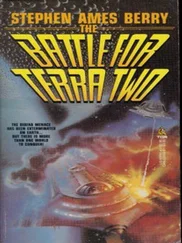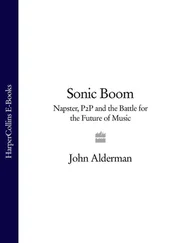Combination-Combination might have continued to be party organisers, or they might have tried seriously to achieve success as a band or become defiant political artists, had it not been for the intervention in autumn 1994 of Franz Penz, one of Herbert and Hans’s teachers at the Academy. In his thirties, with an ill-cut beard to match his ill-fitting pullovers, Penz had wanted to show the two students something novel and exciting that wasn’t available in the art school. Penz was not, however, a great talker and refused to describe the new phenomenon. The boys had begged him to tell them more, but Penz simply said, ‘This is way too cool; I really can’t explain.’ So they went with him across town, to the Technical University’s computer laboratory.
What Penz showed them was the World Wide Web – an easy-to-use information system with a graphical user-interface. Using a mouse to control a pointer on a computer screen, one could click on various parts of the display and bring up new information. It was simple and freewheeling – and, of course, soon to become known as ‘Web surfing’. Within half an hour, Hans had negotiated his way around the Web, from New York to Tokyo to Madrid. ‘I had stars in my brain, and I knew this was exactly what I wanted for the next couple of years. This was the future.’
The World Wide Web began in Switzerland in 1990. A taciturn, idealistic Englishman, Tim Berners-Lee, was working as a researcher at CERN, the European Particle Physics Laboratory, in Geneva, where he had decided that he wanted to create a common Standard for sharing information. At the time, outside a small community of academics and publishers, this was not thought to be the most exciting task. Berners-Lee’s idea was to create something new for the common good, agreed upon between many parties, of which he would be a catalyst and consensus-builder. Dale Dougherty, a publisher of computer books, met Tim Berners-Lee during this time and was struck by his fervour. ‘His idealism was his driving force; that appealed to me,’ he recalls. ‘There was the idea that information online could be linked together and used.’
Previously, using the Internet to find a useful document on a remote machine was tricky. Postel’s Standards focused on the network and the transferring of information, not on the organisation of information – which usually ended up in tree-like hierarchical file systems, rather like those of a computer’s hard drive. The casual user would have to send a command requesting a list of the contents of a particular directory. To find anything useful required a trawl through directory after subdirectory until one chanced upon something interesting.
Berners-Lee wanted to replace these old and difficult methods by enhancing the existing network with a new information system. His models were academic papers: generally full of links, with citations, references and footnotes scarring the texts. His hope was that the ability to jump directly to the source of a citation, rather than having to plod to the library and search for it, would be immensely useful to the research community.
There were some precedents for this idea. Vannevar Bush, Franklin Roosevelt’s scientific advisor and for many the father of the military-industrial complex, had written an article about such a system way back in 1945. Ted Nelson, a self-described ‘paradigm creator’, had dreamed up an information system named Xanadu in the early 1960s, in which he called the connections between documents ‘hyperlinks’. But nobody had ever managed to get such a system to work across a network of computers. Nor had any single system been widely adopted by sufficient numbers of people to be of real use. At the time of Berners-Lee’s investigation, a competing system called Gopher – much beloved of librarians because it allowed remote access to large databases such as catalogues – seemed like it might become ubiquitous enough for users to invest the time in getting and installing its software. But Berners-Lee was undaunted, and soon adopted the name Hypertext for his document system.
Just as the Internet relies on the Standards of TCP/IP, Tim Berners-Lee needed a set of Standards which would enable computers using Hypertext to communicate and which would dovetail with the Internet itself. Late in 1990 he finalised those Standards. The idea was that the sharable information would be held on a remote computer, which Berners-Lee called the server, and these would be available and accessible to a global audience across the Internet. Other computers within the network would run a different sort of computer application; these would be known as browsers, and could request information from the server. Once the information had made its way to the browser it would appear in a window; the user could then pull up other information by clicking on any of the hyperlinks that were displayed in the browser window.
This transfer of information was regulated by the Standards. The ‘http’ that is now a prefix to Web addresses stands for Hypertext Transfer Protocol, which is just a way of ensuring that computers are speaking the same language. One of the most important parts of the Standards that Berners-Lee created, and which has underlain every dispute about Web domains, is the Uniform Resource Locator, or URL. Just as every computer on the Internet has a unique address, which is akin to the location of a house on a street, so the Web needed a definition for the precise location of individual pieces of information – like that of a book or document within the house. That definition is the URL. With it, every music file, program or document can have a specific and precise place on the Internet.
In defining these Standards, Berners-Lee wrote the rudimentary software, as a sort of test, but not on a widely accepted operating system. While touring conferences and writing papers trying to promote what he now called the World Wide Web, he received a muted response. The truth was that Berners-Lee’s Web was just one of a number of different protocols and applications then competing for critical mass in the information community.
In late 1992, Marc Andreessen, the son of a seed salesman from provincial Wisconsin, was a twenty-one-year-old computer programmer finishing his final year at the University of Illinois at Urbana-Champaign and working for $7 an hour at the University’s National Center for Super-Computing Applications (NCSA). Ambitious and arrogant, he was searching for something new to do when another researcher suggested that he write a browser for the barely known but potentially interesting World Wide Web.
In the middle of November 1992, Andreessen contacted Tim Berners-Lee and the Web community for the first time, in a note to the www-talk mailing list, the notice board for the tiny population of Web developers, in which he said that he was ‘starting the game late’. Over the following weeks, he did everything he could do to catch up – working feverishly, posting messages at all times of the day and night – behaviour that he would later describe as ‘obsessive-compulsive’. Almost from the beginning he referred to the Web and his browser as a ‘product’.
On 29 January 1993, Andreessen made a historic announcement to the www-talk mailing list. ‘By the power vested in me by nobody in particular, alpha/beta version 0.5 of NCSA’s … World Wide Web browser, X Mosaic, is hereby released.’ Two months after they’d started their task, he and Eric Bina, his colleague and collaborator, had created their first Web browser. It was for the computer-operating system favoured by the computer-science community, Unix. Remarkably easy to install, more importantly, it worked ; Andreessen pushed it out with aggressive fervour to email groups and bulletin-board services around the Internet. It was adopted with a genuine excitement, in the belief that it really was going to make the difficult world of the Internet popular and easy to use.
Читать дальше











